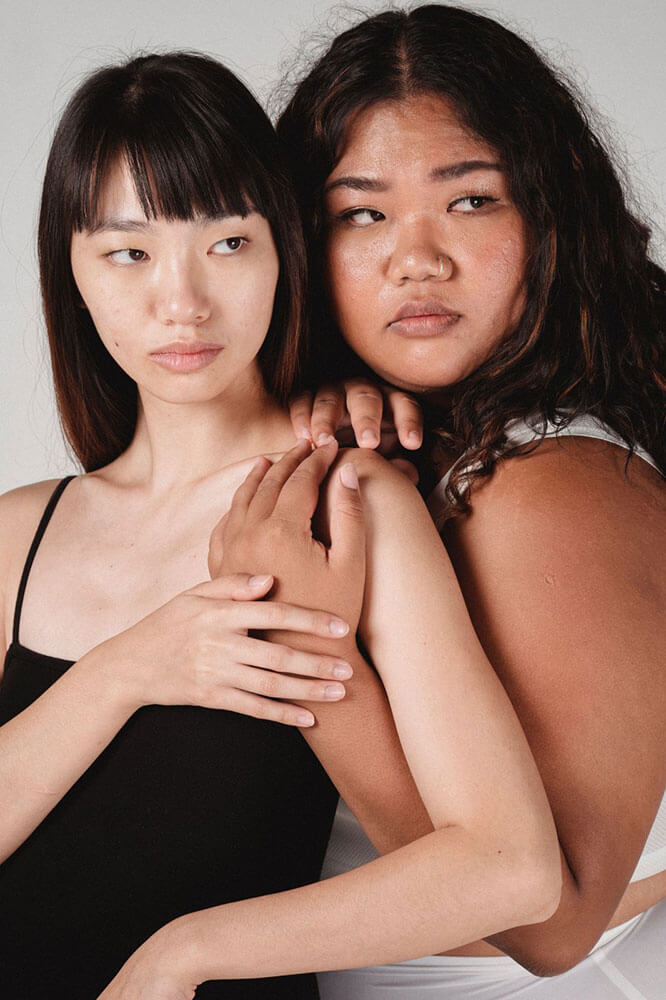Yet, the argument made by and condensed under the somewhat misleading term of body positivity is much more far-reaching, going well beyond media representations and affecting deeply the mental and body health of all of us. Urging us to appreciate our bodies with all their flaws and to feel comfortable and confident with our body image, the body positivity activism aims at celebrating all body types as equally valid and desirable in order to combat depression, low self-esteem, and eating disorders as the traumatizing effects the unattainable aesthetic standards have on each of us.
When it comes to queer fashion itself, the body positivity is a marketing mantra automatically evoked by fashion brands as an almost implicit requirement for them to be considered queer in the first place.
However, if one looks closely at the products and the promotional material that frames them, not only the beauty standards in the vast majority of ‘queer’ brands faithfully reproduce the heteronormative bodily norms, but also this sexist policing of the queer body is asymmetrical at the expense of women or femininities. For example, parts of the female body, like the nipples, are heavily censored and bodily fluids, like the menstruation, and traits, like body fur, are condemned as ‘ugly’ or even ‘disgusting’ remaining out of the visual field of the customers. On the other hand, we should keep in mind that sexism cuts both ways. ‘Queer’ brands that sell underwear to exclusively male consumers promote an over-masculinist look of bodies sexualised to the point of pornographication. The typical male model is another white cis gay clone with a sixpack, shaved all over and wearing tattoos, proudly exposing his huge bulge.





.jpg)


.jpg)

 Login
Login